Cong you bing or Chinese pancakes filled with scallion greens (scallion pancakes).
The major difference from classic pancakes is that instead of batter, they are made of dough and somewhat resemble more our piadine.
Many theories surround their origin, with the most accepted one being connected to the large Indian community in Shanghai due to its similarity to paratha, the typical bread from Northern India.
Another legend tells that Marco Polo, during his journey in China, appreciated the cuisine so much that upon his return to Italy, he asked his cooks to reproduce cong you bing.
They are usually accompanied by soy sauce, mixed with rice vinegar and garlic powder if you like it.
In the photo at the bottom, those tasted in Shanghai.
The common thread is the bing (the dough); you will find many similar recipes in China, including Xian bing and Dan Bing from Taiwan already on the blog.
The bing is a Chinese food made from wheat flour in a flattened or disc shape. These foods can resemble cakes, pancakes, and unleavened dough foods from non-Chinese cuisines.
Many of them are similar to Indian roti, French crepes, Salvadoran pupusa, or Mexican tortilla (Mexican Thin Bing), while others are more similar to cakes and cookies.
The term is Chinese, but it can also refer to cakes or pastries from other cultures.
Crepes and pizza, for example, are called keli bing (可麗餅) and pisa bing (披薩餅), respectively, based on the sound of their Latin names.
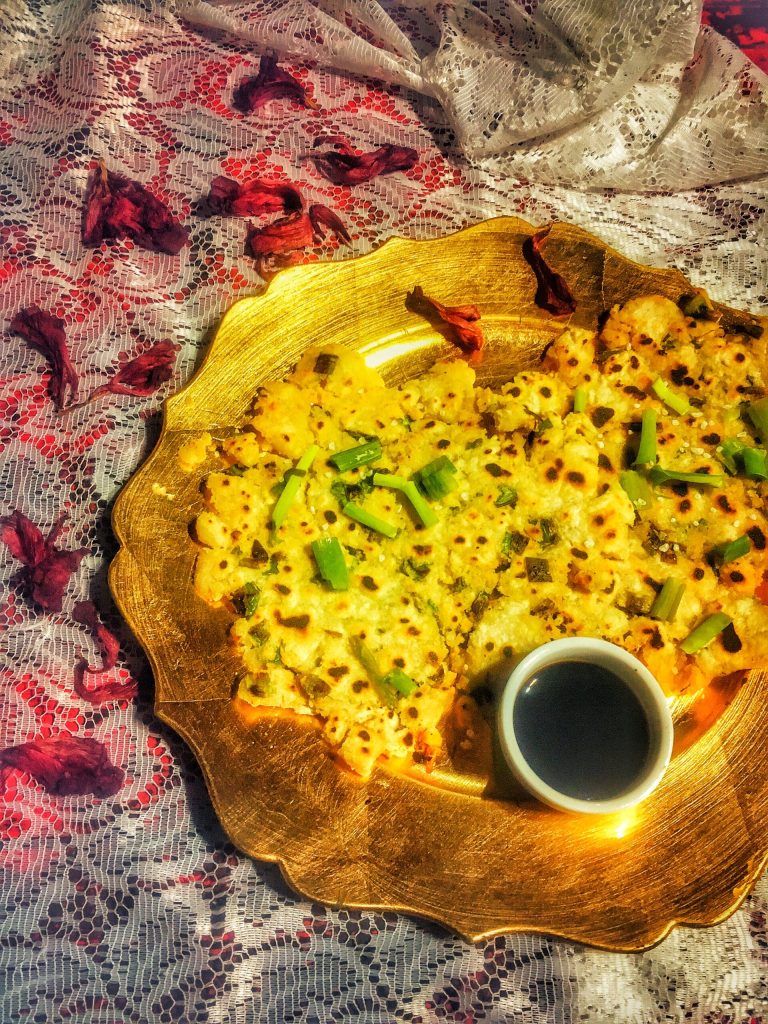
- Difficulty: Easy
- Rest time: 45 Minutes
- Preparation time: 10 Minutes
- Portions: 4 people
- Cooking methods: Stove
- Cuisine: Chinese
Ingredients
- 9 oz flour
- 3/4 cup water (hot)
- 5 scallions (green parts)
- to taste salt
- to taste vegetable oil
Steps
In a bowl, mix the flour with the salt and gradually add the boiling water.
Then knead the dough.
Brush the dough ball with a bit of oil and let it rest for about an hour, covered with a damp cloth.
Now divide the dough into six parts.
Cut the scallions, the green part, into fine rings.
Roll out the dough thinly into a rectangle and then fill it with the scallions, season with salt, and roll it up. Let it rest for another 15 minutes.
With the help of a rolling pin to roll out the rolled dough, heat oil in a pan and cook each Cong You Bing.
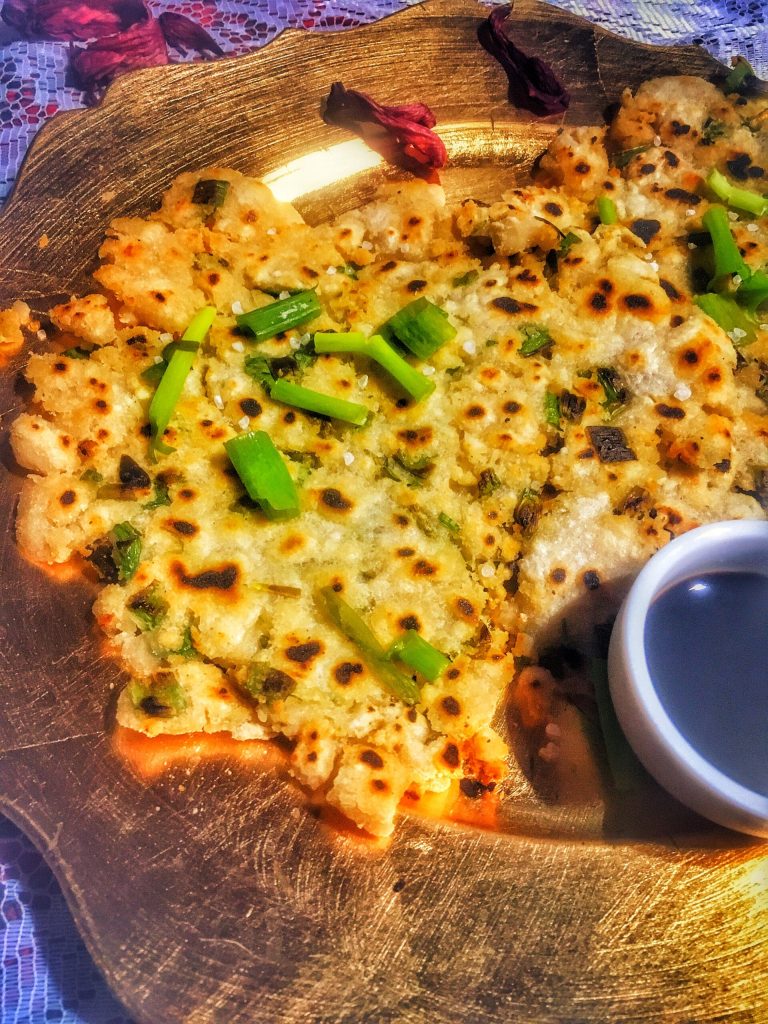
These are from the breakfast at the Harbour Metropolitan Plaza Hotel in Shanghai:

If you want to discover Marco Polo’s journey in China…
FAQ
What are the other types of “bing”?
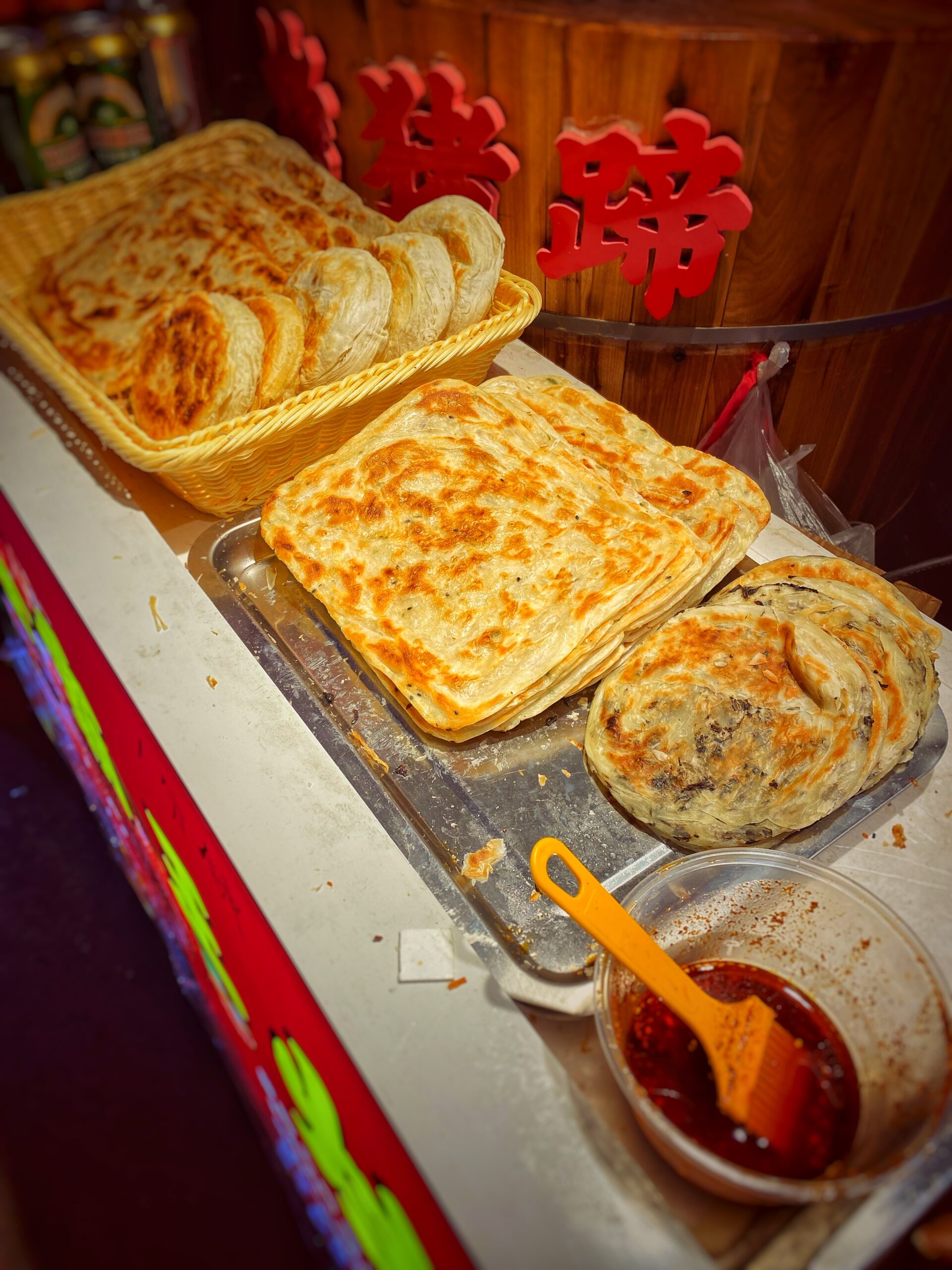
When chives (jiucai) are used, they are called jiucai bing or jiucai you bing.
Laobing is prepared by pan-frying a rolled and layered unleavened dough made from salt, flour, and water.
Most are simple, although some contain shallots or brown sugar in the dough.
Laobing is usually sliced and served as a staple food, or it can be stir-fried with meat and vegetables to make chaobing (stir-fried Chinese pancakes).
These are the ones tasted in Shanghai in the Old City: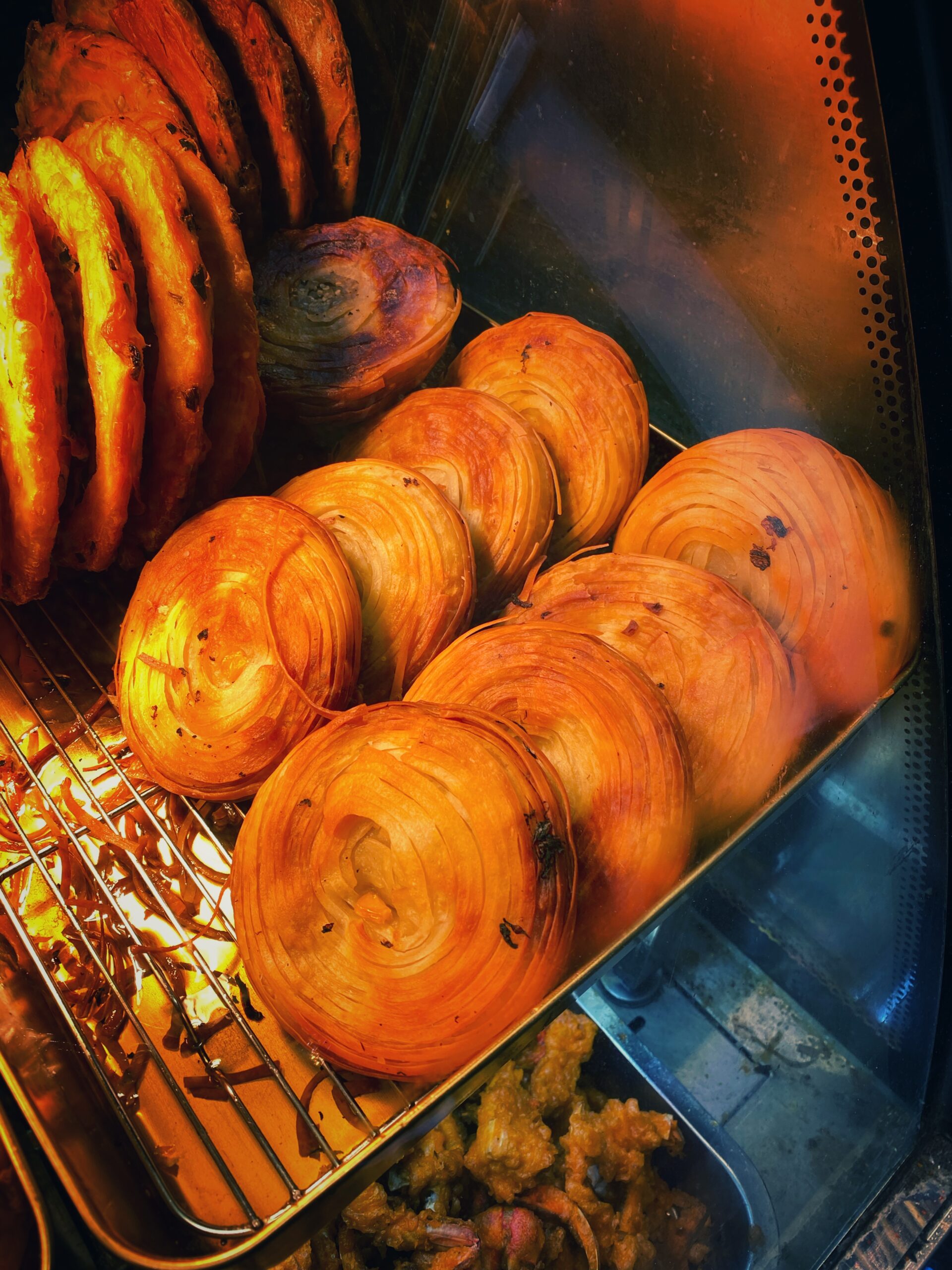
Shaobing, also called huoshao, is a type of layered, unleavened flatbread baked in the cuisine of Northern China.
It can be made with or without fillings and with or without sesame on top.
Shaobing contains a variety of fillings that can be grouped into two main flavors: savory or sweet.
Common fillings include red bean paste, black sesame paste, stir-fried mung beans with eggs and tofu, braised beef, smoked meat, beef or pork with spices.
These are the ones with beef typical of Hangzhou stalls:
Fa mian bing, leavened bing.
Chun bing (spring pancake), a thin northern bing traditionally consumed to celebrate the beginning of spring.
Usually eaten with a variety of fillings.
Jianbing pancakes with fried eggs, similar to crepes, a popular breakfast street food in China.
Bó băng (literally “thin pancakes”), a thin circular wrapper similar to a crepe or “skin” that wraps various fillings.
Luóbo si bing (shredded radish bing), a type of bing fried in frying pan made of a wheat dough skin filled with shredded radish.
Rou jia bing, also called rou jia mo, refers to a bing that is sliced open and filled with meat, typically braised pork or lamb.
This one was tasted in Hangzhou:
Some variations, like niu rou jia bing, use sesame bread and are filled with beef, carrots, and pickled daikon, similar to a Vietnamese banh mi.
Hé yè băng (a folding bing made to represent a lotus leaf), used to accompany many rich meat fillings and popularized by the gua bao, a variation with red-cooked pork belly.
Jin bing layered, made with high-gluten flour (jin means gluten) popular in Northern China.
It is also known as zhua bing because its layers can be grabbed (zhua means grab) with hands.
This is a Bing stall in Shanghai: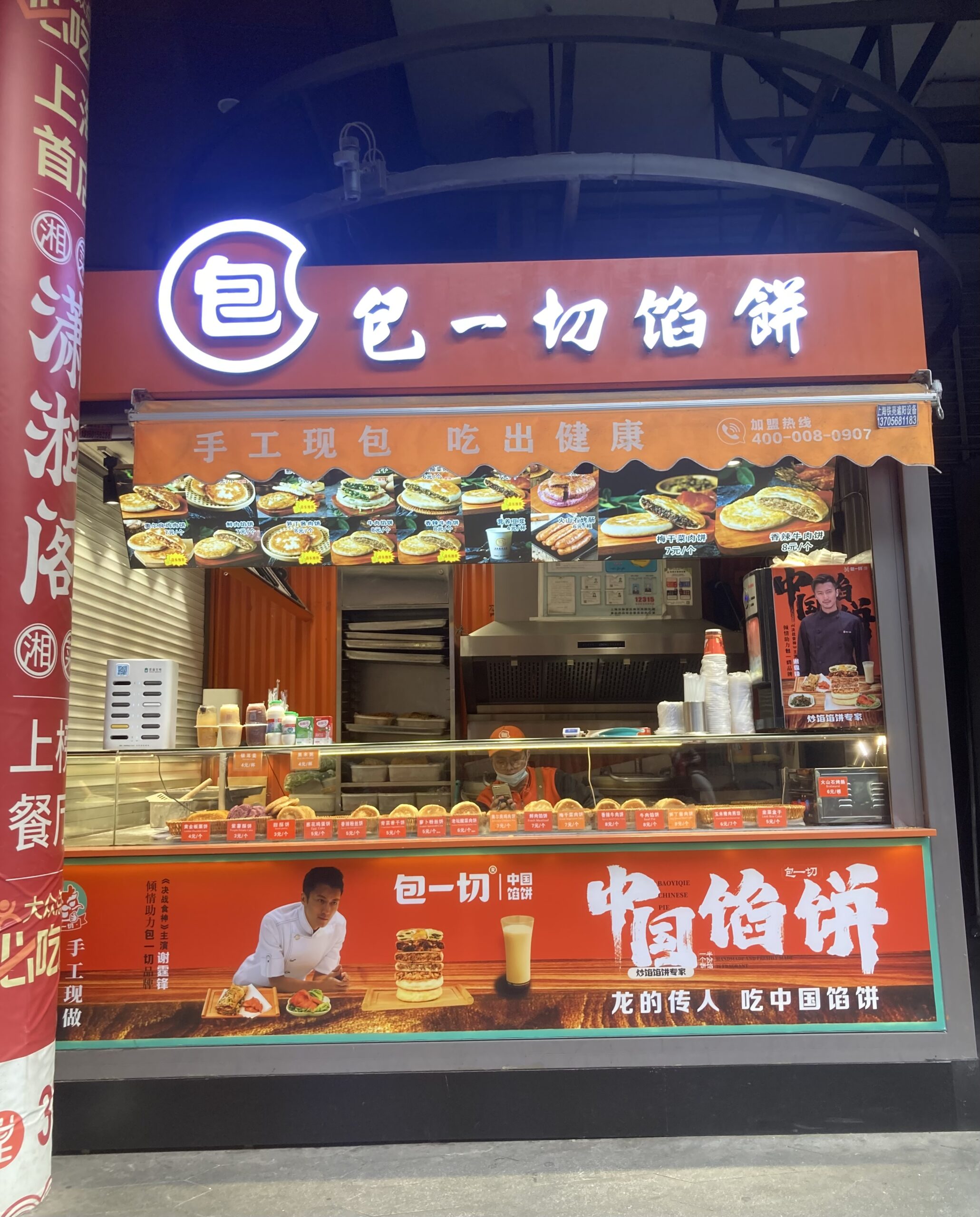
What is cong you bing called in other countries?
In Cambodia it is num pang chen (នំប៉័ងចិន literally “Chinese bread”) and is a popular street food that is baked and fried at the same time rather than simply fried like its Chinese counterpart.
In Taiwanese cuisine, they are egg pancakes (蛋餅) and are stir-fried with one side covered in egg, and the dough is thinner and moister.
In Korea, they are Pajeon, but with a difference in texture.
In Japan, the character 餅 usually refers to mochi (glutinous rice cakes), but is also used for some other foods including senbei rice crackers (煎餅), written with the same characters, but different from jianbing.
Most Japanese wheat cakes similar to bing, both sweet and savory, are instead called yaki (焼き), as in dorayaki, taiyaki, okonomiyaki, etc.
In North America, they are often served with soy sauce, hot chili sauce, or Vietnamese sauce.
Sometimes called “mandarin pancake” or “moo shu pancake” (mù xū bǐng) in Chinese American food contexts.
In Malaysia they are Murtabak.What is the difference between Cong you bing and Korean Pajeon?
In appearance, it is similar to a Korean pancake, the pajeon, but it differs because the latter is made from a liquid batter, giving it a lighter consistency.

